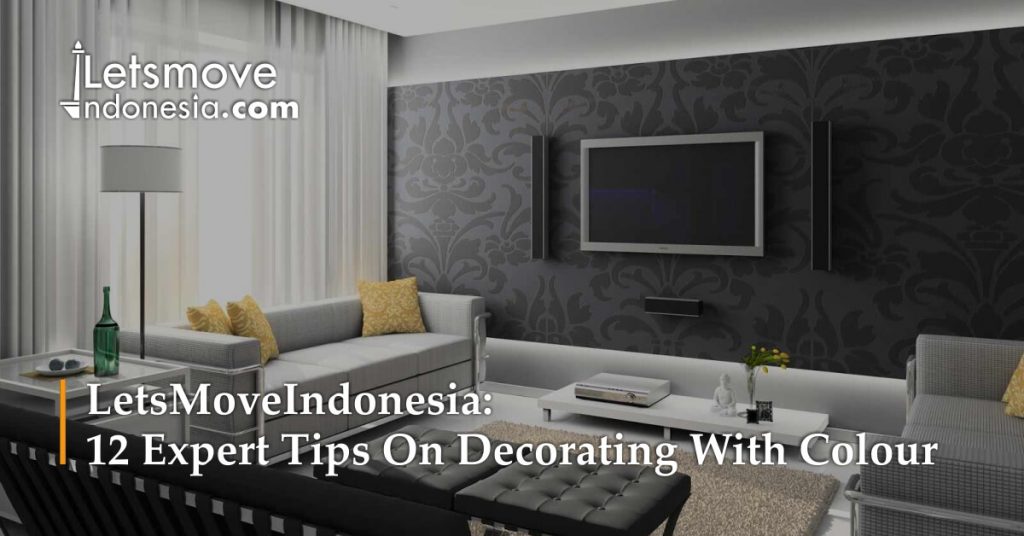1. Preparation is key
Always prep properly before decorating. It doesn’t matter how much you invest in expensive paint – if the walls are shabby, you won’t be happy with the end result. Cut in using a quality paintbrush using confident, sweeping strokes. If you’re concerned about painting in a straight line, mask walls with tape removing it as soon as the paint has started to dry. Use a microfibre roller to complete the wall, using light pressure to produce an even finish.
2. Using colour in the kitchen
Your choice of cabinetry colour depends on the overall style and feel of the space. Grey and sage are solid colours that will sit well in both modern and traditional environments, dependant on your choice of handles and detailing. Decorating in charcoal and near-black can make stunning kitchens, particularly when combined with metallics or pops of colour.
3. Create a relaxing bathroom
To make any room a relaxing haven, you should use whatever colour makes you go ‘ahhhhh’. The trick is to avoid jarring elements and stick with a tonal palette for that zen-like quality.
4. Add visual interest without a feature wall
Feature walls are great, but an updated way to add interest is by using colour half way up the wall and leaving the rest neutral. Give this your own stamp of personality by creating an imaginary dado rail using another colour such as caramel coffee or navy blue, similar to the way the Victorians would use panel-like features. The easiest and possibly most effective way to add colour is with your accessories.
5. Paint your ceilings
Painting the ceilings white definitely makes them appear higher and brighter, which then makes the room feel bigger, but if you are looking for a bolder statement, match your ceiling and walls to create a rich, full and complete atmosphere. Ceilings often look darker than the walls as they aren’t hit directly by the light, so if you are using a variation of the colour on the walls, I would go for a couple of shades lighter but in the same family of colour, as this will create a seamless look and open up the space.
6. Contrast woodwork
Contrasting walls and woodwork generally work best, but if you decide to use the same colour on both, they will still appear to contrast. Most people use a matt emulsion on the walls and an eggshell finish on the woodwork. The light will bounce off the eggshell, which has a soft sheen, and be diffused by the matt finish on the walls, meaning that they will end up reading as subtly different colours anyway.
7. Using colour in a sun-filled room
Only use warm colours for accents and opt for soft, watery blues and khakis – these are perfect for south-facing rooms as they are muted, creating a restful feel. Turquoises and aqua are also great as they are cool toned yet still uplifting.
8. The best colours for cold rooms
Embrace naturally gloomy rooms and enhancing the feeling of ‘mood’ by painting in a dark colour. Natural daylight in north-facing rooms has a cooler colour temperature, which casts a blue tone on interiors, so choose a warmer tone to even this out.
9. Don’t be afraid of dark colours
Decorating in a dark colour will certainly impact the feeling of space in a room, but using a receding colour, such as blue or violet, will minimise the effect. Limit texture within the scheme to maintain an open feel.
10. Decorating in open plan spaces
Paint the entire open plan space in the same colour unless the architecture of the room has clear breakpoints where it would feel logical to change. It looks great in a contemporary open-plan space to paint all the walls in one colour, and then zone the areas for food preparation, dining and relaxing though the arrangement of the furniture, placement of rugs, and the use of bold art. If you do decide to introduce more than one colour, make sure it reinforces the zoning.
11. How to stop grey looking dull
The joy of this colour is that there are actually greys of every type: blue greys, pink greys, green greys, yellow greys, warm greys and cool greys. You can use one of these coloured greys as the canvas for layering on the rest of your chosen palette. Greys are subtle, elegant and sophisticated and, if used carefully, will never look dull. They work really well with the quality of the northern European light we have in the UK, and people find them very calming and easy to live with.
12. Injecting colour into your garden
The garden is a space for colour, whether decorated with plants and flowers or using repurposed furniture. The easiest way is by incorporating colourful throws, cushions and accessories in shades such as bright greens and sunny yellows to fit with the greenery of the garden, or with peachy corals, aqua and reds to create contrast.











